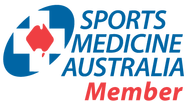|
The acromio-clavicular (AC) joint connects the collarbone and the shoulder blade and is essentially what joins your arm to your body.
It is injured with a blow on the point of the shoulder, either contacting an opposition player or the ground. It is immediately painful and tender to touch on the tip of the shoulder. There may be a bump you can see and feel. It is diagnosed by reproducing the pain - with pushing on the joint, as well as pain with taking the arm across the front of the body. Another good test is to reproduce pain with linking your fingers and pulling apart. The AC Joint moves with all movements of your arm, so pretty much everything will hurt initially, particularly hands-above-head positions. |
How To Diagnose an AC Joint Injury:
An AC joint injury tears ligaments. Ligaments are the bits of rope-like tissue that hold our joints together. Ligaments tolerate 4% strain (stretch) before fibres start to tear. Take them to 8% strain and they will rupture.
We grade ligament injuries 1 - 3:
For AC joint injuries we further classify them into Types I – V. Type I correlates with a Grade 1 ligament injury. Type II correlates with a Grade 2 ligament injury. Type III, IV, & V correlate with increasing severity of Grade 3 ligament ruptures. Type III may require surgical repair. Type IV & V definitely require surgical repair.
Type II’s and above will result in a permanent cosmetic deformity. It looks like a lump but it’s actually the weight of the arm pulling down so there is a step defect, or drop-off, off the end of the collarbone. This is largely cosmetic rather than functional. Type II & III can look pretty nasty with no real loss of strength. Some people call this a shoulder separation.
Initial management is RICE.
The AC Joint takes the weight of the arm so you will be more comfortable relieving the weight of the arm by wearing a sling initially.
Ice regularly for pain relief.
Take anti-inflammatories regularly for a few days.
When the pain allows, try and get the arm moving rather than letting it stiffen up. Lift the arm above your head and behind your back, and roll your shoulders.
When the pain allows, you can start light resistance loading to keep some strength in the muscles, particularly chest and shoulders.
When the pain allows, you can return to non-contact training & ball work.
When the pain allows, you can hit some pads and progress to contact training. I generally find once you can do 10 push-ups you can hit some pads.
When you return to contact you will feel more comfortable with the shoulder strapped and wearing shoulder pads.
We grade ligament injuries 1 - 3:
- Grade 1 is painful, but everything is structurally in place. You will most likely stay on the field with a Grade 1. It will be sore for a week or two but you won’t miss any footy.
- Grade 2 ligament injuries tear enough of the tissue that there is a resulting laxity or stretch in the ligament. A Grade 2 will be too painful to keep playing at the time. Grade 2’s will be sore for 4 to 6 weeks, and you’ll miss 3-4 weeks of footy.
- Grade 3 ligament injuries are a complete rupture &, depending on where they are, may need surgical repair. They will be sore for 3 months and you’d expect to miss 8-12 weeks of footy.
For AC joint injuries we further classify them into Types I – V. Type I correlates with a Grade 1 ligament injury. Type II correlates with a Grade 2 ligament injury. Type III, IV, & V correlate with increasing severity of Grade 3 ligament ruptures. Type III may require surgical repair. Type IV & V definitely require surgical repair.
Type II’s and above will result in a permanent cosmetic deformity. It looks like a lump but it’s actually the weight of the arm pulling down so there is a step defect, or drop-off, off the end of the collarbone. This is largely cosmetic rather than functional. Type II & III can look pretty nasty with no real loss of strength. Some people call this a shoulder separation.
Initial management is RICE.
The AC Joint takes the weight of the arm so you will be more comfortable relieving the weight of the arm by wearing a sling initially.
Ice regularly for pain relief.
Take anti-inflammatories regularly for a few days.
When the pain allows, try and get the arm moving rather than letting it stiffen up. Lift the arm above your head and behind your back, and roll your shoulders.
When the pain allows, you can start light resistance loading to keep some strength in the muscles, particularly chest and shoulders.
When the pain allows, you can return to non-contact training & ball work.
When the pain allows, you can hit some pads and progress to contact training. I generally find once you can do 10 push-ups you can hit some pads.
When you return to contact you will feel more comfortable with the shoulder strapped and wearing shoulder pads.





